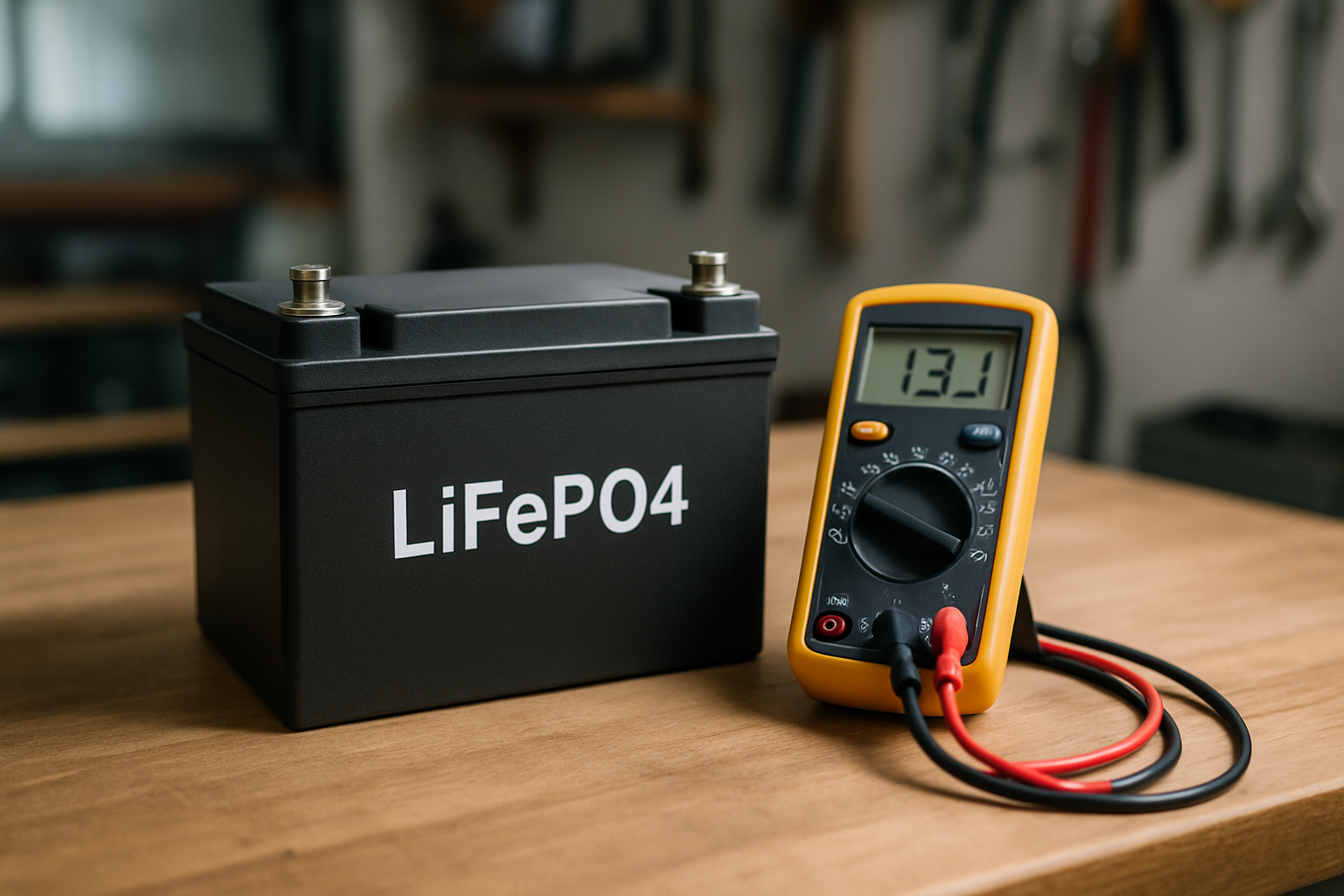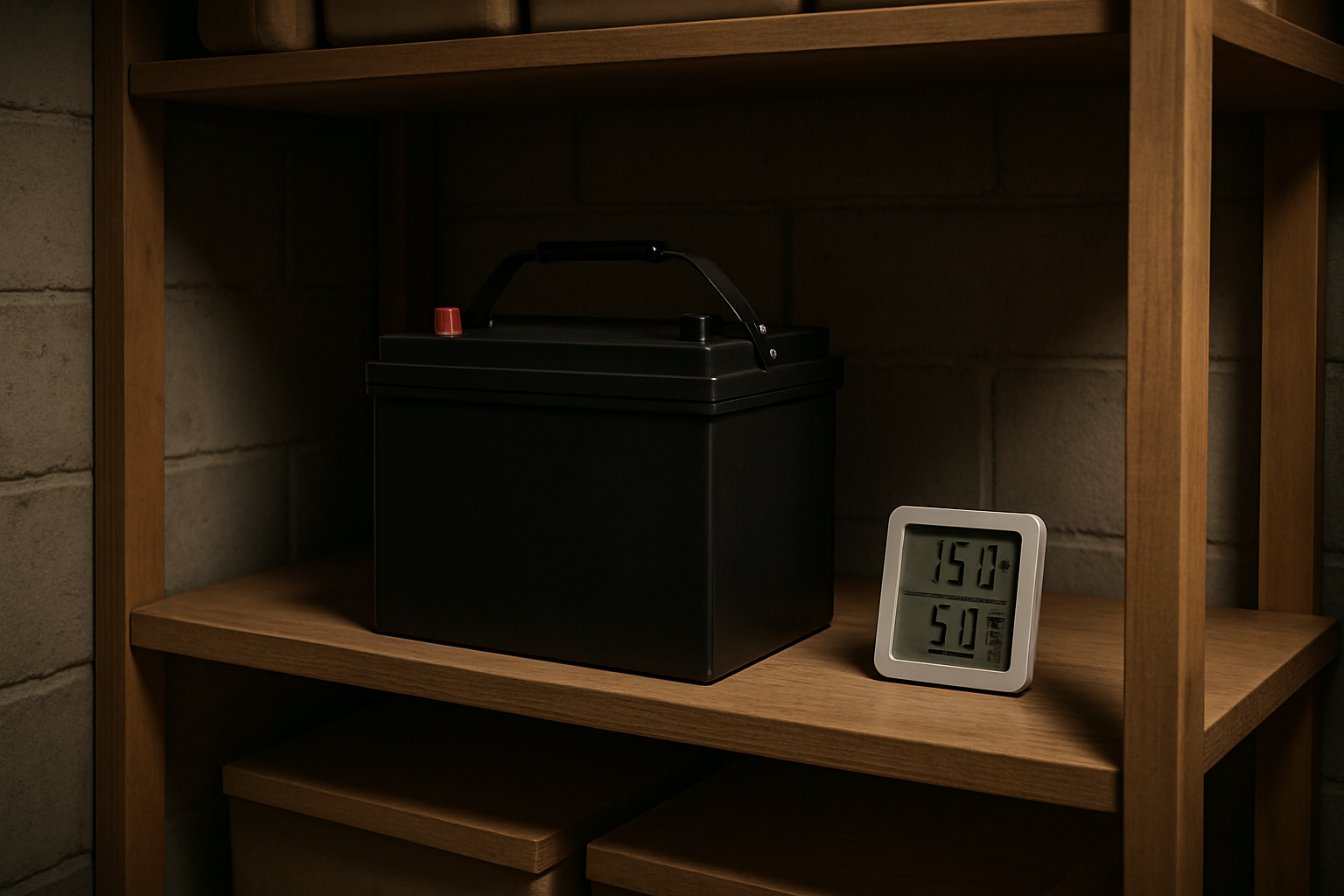Lithium Iron Phosphate (LiFePO4) batteries represent a significant investment in your journey toward energy independence. Their robust performance and long cycle life are key advantages, but unlocking their full potential requires proper care, especially during periods of inactivity. Improper long-term LiFePO4 storage can silently diminish capacity and shorten the lifespan of your valuable asset. This guide provides a clear, actionable roadmap to the optimal LiFePO4 storage conditions, ensuring your battery remains healthy and ready for service.
The Science of LiFePO4 Degradation During Storage
A battery's health declines even when it's not in use. This process, known as calendar aging, is a primary factor in determining the ultimate lifespan of your battery. Understanding the mechanisms behind it is the first step toward effective preservation.
Understanding Calendar Aging
Calendar aging refers to the gradual degradation of a battery's internal components over time, independent of charge and discharge cycles. Key factors that accelerate this process are high states of charge (SOC) and elevated temperatures. These conditions promote unwanted side reactions inside the cell, such as the growth of the Solid Electrolyte Interphase (SEI) layer. While a stable SEI layer is crucial for battery function, its excessive growth consumes active lithium, leading to permanent capacity loss. High temperatures act as a catalyst, speeding up these detrimental chemical reactions.
Why LiFePO4 Chemistry is More Resilient
Compared to other lithium-ion chemistries, LiFePO4 is inherently more stable and less prone to degradation. This resilience comes from the strong covalent bond between phosphorus and oxygen atoms within its cathode structure. This robust molecular framework makes the battery less susceptible to thermal runaway and chemical breakdown, even under stress. However, while more forgiving, LiFePO4 batteries are not immune to the effects of poor storage practices.
The Golden Rules for Long-Term LiFePO4 Storage
Adhering to a few fundamental principles can dramatically extend the shelf life of your LiFePO4 battery, protecting its capacity and ensuring it performs as expected when you need it again.
The Optimal State of Charge (SOC)
The single most critical factor for long-term storage is the battery's state of charge. Storing a LiFePO4 battery at 100% or near 0% SOC places significant stress on its internal components. The ideal SOC for long-term LiFePO4 storage is between 40% and 60%. This partial state of charge minimizes electrical potential differences within the cell, slowing the rate of calendar aging. As highlighted in the Ultimate Reference for Solar Storage Performance, managing SOC is a cornerstone of maintaining battery health for any energy storage system.
Ideal Temperature and Environment
Temperature is another crucial variable. The optimal storage temperature for LiFePO4 batteries is in a cool, stable range, typically between 5°C and 25°C (41°F and 77°F). Avoid locations with extreme temperature fluctuations, like uninsulated garages or attics. High heat accelerates degradation, while freezing temperatures can cause physical damage to internal components. The storage environment should also be clean, dry, and well-ventilated, away from direct sunlight and any corrosive materials.
Disconnection and Isolation
Before placing the battery into storage, it is imperative to disconnect it from all loads and charging sources. Even small, seemingly insignificant devices can create a parasitic drain, slowly depleting the battery's charge over time. If left unchecked, this can discharge the battery to a critically low voltage, potentially causing irreversible damage and rendering it unable to accept a charge.
Step-by-Step Storage and Reactivation Protocol
Following a structured process for both storing and reactivating your battery ensures safety and preserves its health.
Preparing Your Battery for Storage
Follow these steps to prepare your battery correctly:
- Conduct one final full charge and discharge cycle to verify its current health and capacity.
- Using a compatible charger, bring the battery to the target storage SOC of 40-60%.
- Carefully disconnect all positive and negative cables from the terminals.
- Clean the battery casing and terminals to remove any dust or corrosion.
- Place the battery in its designated cool, dry, and stable storage location.
Maintenance During Storage
LiFePO4 batteries have a very low self-discharge rate, typically 1-3% per month. However, for storage periods exceeding six months, it's wise to perform periodic checks.
- Every 3-6 months, use a multimeter to check the battery's voltage.
- If the voltage has dropped significantly, perform a brief maintenance charge to bring it back into the 40-60% SOC range.
- Avoid a full charge; the goal is simply to prevent over-discharge.
Waking Up Your Battery Safely
When it's time to bring your battery out of storage, a careful reactivation process is essential:
- Perform a thorough visual inspection of the battery, looking for any signs of swelling, leaking, or physical damage.
- Allow the battery to acclimate to the ambient operating temperature for at least 24 hours.
- Connect a compatible LiFePO4 charger and begin with a slow, low-current charge. This gentle approach helps to safely wake up the cells.
- Once fully charged, run the battery through a complete discharge and recharge cycle. This helps to recalibrate the Battery Management System (BMS) and confirm the battery's usable capacity.
The Bigger Picture: Storage and Second-Life Applications
Proper battery maintenance is not just about preserving your own investment; it contributes to a more sustainable energy ecosystem. Well-maintained batteries retain higher capacity and are better candidates for second-life applications. When an EV battery's capacity drops to 70-80%, it may no longer be suitable for automotive use but is perfect for stationary energy storage. According to a report from the International Renewable Energy Agency, Innovation Outlook: Smart charging for electric vehicles, these retired batteries can have their lifespan extended by up to 10 years in less demanding roles. Furthermore, extending the life of existing batteries through proper care and second-life use reduces the demand for new raw materials, a key point emphasized by the IEA's report on The Role of Critical Minerals in Clean Energy Transitions. By following optimal storage practices, you are maximizing the total lifecycle value of the battery.
Your Storage Strategy: A Summary
Protecting your LiFePO4 battery during storage is straightforward but requires diligence. By maintaining a state of charge between 40-60%, providing a cool and stable environment, and ensuring the battery is fully disconnected, you actively prevent premature degradation. A disciplined approach to storage and reactivation will ensure your energy storage system delivers reliable performance and maximum longevity, safeguarding a core component of your energy independence.
Frequently Asked Questions
What is the ideal SOC for storing a LiFePO4 battery?
The ideal State of Charge (SOC) for long-term storage is between 40% and 60%. This range minimizes internal stress on the battery cells and significantly slows the chemical reactions that cause calendar aging, thereby preserving battery longevity.
Can I store a LiFePO4 battery fully charged?
Storing a LiFePO4 battery at 100% SOC is not recommended. A fully charged state, particularly in warm conditions, accelerates capacity loss and can permanently reduce the battery's overall lifespan.
How long can a LiFePO4 battery be stored?
When stored under optimal conditions (40-60% SOC in a cool, dry place), a LiFePO4 battery can be stored for several years with minimal capacity degradation. It is best practice to check the voltage every 3-6 months and apply a brief maintenance charge if needed.
What happens if a LiFePO4 battery is stored at 0% SOC?
Storing a LiFePO4 battery at or near 0% SOC for an extended period can cause irreversible damage. The cell voltage may drop below a critical level where the internal BMS enters a protection mode, and standard chargers may no longer recognize or be able to recharge the battery.
Do I need to disconnect the battery for storage?
Yes, it is essential to completely disconnect the battery from all electrical loads and charging systems. This prevents parasitic drain, which can slowly deplete the battery over time and lead to a damaging over-discharged state.





Leave a comment
All comments are moderated before being published.
This site is protected by hCaptcha and the hCaptcha Privacy Policy and Terms of Service apply.